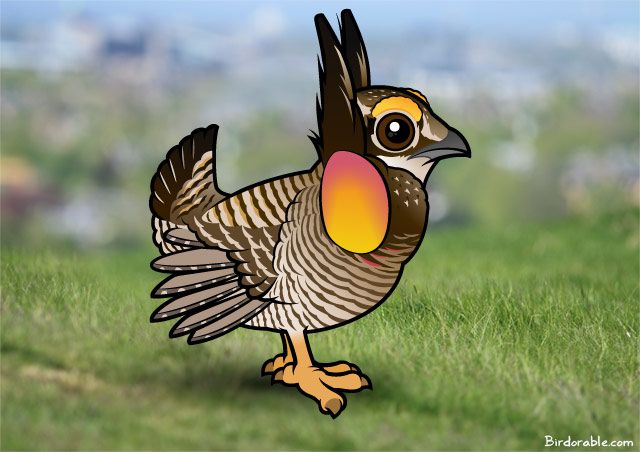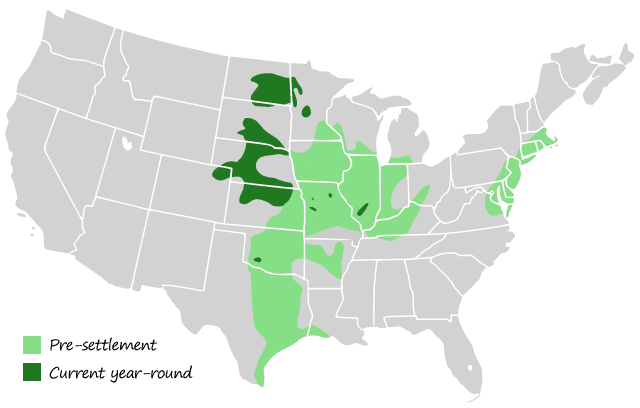The Plight of the Greater Prairie-Chicken

Best known for their elaborate mating dance, Greater Prairie-Chickens once thrived across large parts of North America. Hunting and habitat loss over the last century has drastically reduced these beautiful birds to near extinction. Once so abundant they were a main food source for pioneers settling in the west, the birds have become extremely rare and have disappeared in much of their range.
Prairie-chickens are of great significance to Native Americans and many tribes have prairie-chicken dances. The grassland birds are well-known for their mating ritual, in which male birds defend their 'booming grounds' by perform a display in hopes of attracting females. The dance involves inflating air saces on the side of their neck and snapping their tails. The strange booming sound gives the bird its nickname "Boomer".
There are three subspecies of this bird:
- The Heath Hen was originally found along the Atlantic coast, but became extinct in 1932.
- The Attwater's Prairie-Chicken is highly endangered and restricted to small coastal areas in Texas and Louisana. Around the year 1900 over a million Attwater's Prairie-Chickens lived in the gulf coastal prairie and huge numbers of males gathered to perform their elaborate courtship ritual. Now, less than one percent of the original coastal prairie habitat remains. Less than 100 Attwater's Prairie-Chickens are left in the wild, all resulting from release of animals raised in captivity. In 1967 the species was listed as federally endangered and in 1973 the U.S. Fish and Wildlife Service established the Attwater’s Prairie Chicken National Wildlife Refuge in Texas.
- The Greater Prairie-Chicken nominate subspecies is threatened, but remains numerous enough to still be hunted in four states. The bird went almost extinct in the 1930s due to hunting and habitat loss and now lives only on small parcels of managed prairie land. In states such as Iowa and Missouri, where Greater Prairie-Chickens were once abundant, only hundreds remain.

Read more about these amazing birds and prairie-chicken conservation efforts on the following websites:





Comments
Leave a comment
Thank you!